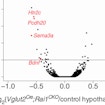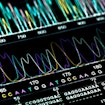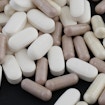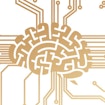
SFARI Investigator Liqun Luo discusses the neurodevelopmental disorder Smith-Magenis syndrome and his lab’s efforts to understand its underlying biology.

SFARI Investigator Liqun Luo discusses the neurodevelopmental disorder Smith-Magenis syndrome and his lab’s efforts to understand its underlying biology.

A number of studies have lead to the suggestion that disruptions to chloride homeostasis play a role in a variety of neurological and neurodevelopmental disorders. The neuron-specific potassium chloride co-transporter, KCC2, is the major chloride exporter in neuronal cells, and mutations in SLC12A5 (the gene encoding KCC2) have been reported in individuals with some neurodevelopmental disorders, such as autism spectrum disorder (ASD), epilepsy and schizophrenia. Further, results from KCC2 knockout and knockdown mice highlight the importance of this protein in proper neuronal function.

Liqun Luo uses conditional, cell-type-specific RAI1 deletions in mice to assess how loss of RAI1 contributes to neurodevelopmental phenotypes in Smith-Magenis syndrome.

SPARK (Simons Foundation Powering Autism Research for Knowledge) is an autism research initiative that aims to recruit, engage and retain a community of 50,000 individuals with autism and their family members living in the U.S. Participation in this cohort will involve contribution of medical and behavioral information, mailing in saliva for genetic analysis, the potential option to have genetic findings related to autism returned, and consenting to be invited to participate in future research studies.

Clinical Research Associates (CRA) is evaluating new potential treatments for autism, including R-baclofen.

Recent studies have provided compelling evidence that loss-of-function mutations in the CHD8 gene, which encodes an ATP-dependent chromatin-remodeling factor, are associated with an autism subtype characterized by macrocephaly, specific craniofacial features and gut immobility. The CHD8 protein modifies the structure of chromatin in the cell nucleus, and in vitro studies have suggested that CHD8 might function as a regulator of the developmentally important Wnt and PTEN signaling pathways. Tight control of both of these pathways is critical for normal brain development, and mutations that affect their activity have been strongly associated with autism and brain size. It is therefore important to test whether CHD8 functions as a regulator of these pathways during brain development.

Autism arises in early childhood, during a period of intense learning when many of the brain’s connections are modified by experience. Several autism-associated proteins also play important roles in memory formation.

The sense of touch allows us to navigate our physical world. The first step in tactile processing involves the activation of low-threshold mechanoreceptor neurons (LTMRs) with highly specialized endings in the skin. Social (affective) touch may be mediated by a unique class of slowly conducting C-fibers, the C-LTMRs.

There is growing support for the idea that both genetic and environmental risk factors contribute to autism. One environmental risk is maternal infection, as validated by large epidemiological studies showing links between infection during pregnancy and autism in the child. Similar associations were found with elevated immune responses in maternal serum or amniotic fluid. Also consistent with an immune pathophysiology are findings of activated microglia — immune cells within the brain — in people with autism, as well as dysregulation of immune-related genes in the brain, cerebral spinal fluid and periphery.

The etiology of autism is complex and mysterious. Autism has a strong genetic basis but there is remarkable diversity and heterogeneity in genes that are associated with the disorder. Despite this heterogeneity, a convergence of evidence suggests that disruptions in synapse function, neuronal activity and circuit formation are the origin of behaviors associated with autism.